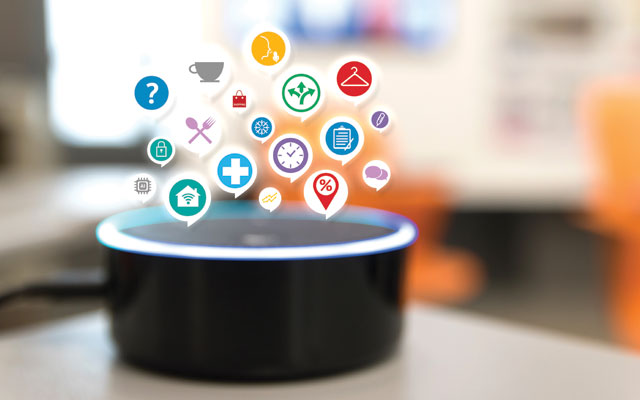Siri, Alexa, Cortana and Google Assistant are names that have recently become familiar to many people throughout the world. Many of us call upon them from time to time to help us with mundane tasks such as web browsing and Internet searches, making phone calls, checking weather information or playing music.
Siri, Alexa, Cortana and Google Assistant are names that have recently become familiar to many people throughout the world. Many of us call upon them from time to time to help us with mundane tasks such as web browsing and Internet searches, making phone calls, checking weather information or playing music.
They are voice-activated digital assistants that reside in our mobile phones and have lately started to appear in other devices such as home speakers, cars, kitchen appliances and watches, to name a few.

Digital assistants are not to be confused with virtual assistants, which are people who work remotely and can handle a variety of tasks. They are technology-based and can be taught (programmed) ‘skills’, which can be downloaded from directories or by simply writing ‘shortcuts’ that help accomplish simple tasks. This is currently how most digital assistants operate.
Adoption of the usage of voice-activated digital assistants has been slow, as we have become conditioned to pressing keys on a typewriter for more than a hundred years. Specialists working in this field will tell you that one of the biggest challenges in the adoption of voice-activated digital assistants is the lack of a display screen. People are accustomed to receiving visual confirmation to ensure that instructions are clearly understood, however I do believe this can be easily overcome.
For example, I have been experimenting with voice-activated digital assistants at work and home for such simple tasks as switching lights on and off, setting up reminders, taking notes, playing music, Internet searches and reading emails. The more times I have used the assistant, the more natural it has become.

The questions that many of us ask is “what is the future of voice-activated digital assistants” and “what is its impact on the travel and tourism industry?”
I believe that in the not too distant future the use of digital assistants will become the norm. Through improvements in artificial intelligence (AI), machines will become more personal and responsive, knowing an individual’s personal habits and eventually anticipating their needs. I am confident that each of us in the future will have their very own digital assistant that will be available to us at anytime and anywhere – think Jarvis in the Iron Man movies.
In the travel and tourism industry, many travel brands have already begun experimenting with Alexa, the digital assistant developed by Amazon, first used in the Amazon Echo and Amazon Echo Dot smart speakers. With Alexa, you can search for flights using the ‘Skyscanner skills’ and, through other built in ‘skills’, search for hotels, information on shows, and check the weather in the destination you plan to travel to. By the time this article is published, there will already be over 30,000 ‘skills’ available on Alexa. Other digital assistants are also building their own portfolio of ‘skills’ and ‘shortcuts’.
For people born in the last 15 years, digital assistants are likely to become part of their daily lives. Therefore, my advice to travel brands is to start experimenting with voice-activated digital assistants. Creating ‘skills’, apps and additional functionality for voice-activated digital assistants is relatively easy and can be set up in a matter of minutes.
Hardware, software and AI are improving daily and talking to a digital assistant will become a common and natural activity. At the beginning, it may feel as odd as the first time we all saw someone with an earpiece appearing to talk to themselves, however over time we will all become accustomed to it.




















